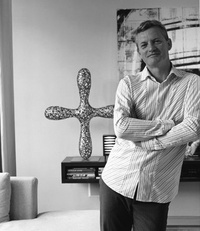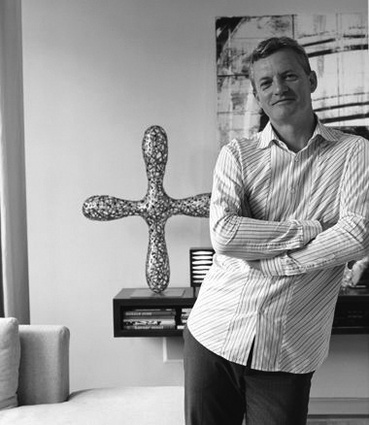New York state of mind
David Howell’s worlds of architecture are almost poles apart. There’s his native New Zealand, where his career started, and then the United States, where he heads his practice in the heart of New York City.
As a member of the American Institute of Architects and the New Zealand Institute of Architects, he has a foot firmly planted in each camp. And from that perch he’s well-placed to observe two very different approaches to the same profession.
Howell sees New Zealand, Australia and parts of Europe as “progressive architectural communities … in terms of what they believe in and what they choose to build”. In contrast, he says the northeastern United States has a very romantic, nostalgic and historic view of architecture.
Howell says New Zealand doesn’t have the same reliance on historical precedence as New York. “This part of the world is conservative, especially when it comes to the built environment. They’ll take risks with other cultural elements, like ballet or music,” but not with architecture.
He initially found that hard to cope with, coming from the opposite culture in New Zealand. “It’s been a challenge,” he admits. However, almost two decades in the Big Apple have smoothed some rough edges.
“I’m learning. I’m observant. I’m not as dogmatic and arrogant in terms of a style or a position,” he says. “I look at things differently now. There’s a maturity and sensibility that comes with working in any industry.”
Howell was born in Hastings and lived in Hawke’s Bay before completing his architecture degree at Auckland University. He graduated in the mid-1980s and after spending three months with Tim Heath in Dunedin he returned to Auckland and joined Lane Priest.

Howell was born in Hastings and lived in Hawke’s Bay before completing his architecture degree at Auckland University. He graduated in the mid-1980s and after spending three months with Tim Heath in Dunedin he returned to Auckland and joined Lane Priest.
Over about four years he worked on a great many projects, including one unusual multi-use building in Auckland that he describes as a concrete box on a glass base with opening concrete shutters. “Now if that building existed in New York, I don’t think it would be successful,” he says. “There’s something about the two different cultures that just doesn’t gel.”
Howell struck out on his own two years after arriving in New York. “I dragged my old drawing board out from under my bed, put it on the dining-room table and fired up the fax machine. It was like ‘I’m in business.’ No cards. No letterhead. No computer. All right. Good to go!”
His first job was a small redesign of a kitchen. However, the client was working at New York-based fashion retailer Liz Claiborne, and during the next 12 months Howell would help create almost 40 of the company’s new stores.
Today, DHD Architecture and Design employs 16 architects, designers and administration staff, including three New Zealanders and Howell’s American wife, interior designer Steffani Aarons. The couple lives nearby the office with 11-year-old twin daughters Sintra and Bianca.
DHD handles about 60 per cent residential, 20 per cent “ground-up” buildings and 20 per cent commercial, including cafes and hotels. The firm has worked on projects around the United States and as far afield as Mexico, Dubai and Qatar.
“There are a lot of interesting opportunities here and not all of it fits into a [single] style bucket. I enjoy that challenge and that’s how I approach my business – every single project we try to approach as an individual design exercise.”
And he still thinks there’s a place, even in New York, for the renowned ingenuity and creativity associated with New Zealanders. “Great ideas will fly any time.”
Though he works mostly in the northeastern United States, Howell still has projects in New Zealand: right now he’s working on one home in the Coromandel, and another, for a Boston-based client, in Motueka.
“It’s a challenge. You’ve got to rethink, put on a different hat. You have to reassess what the landscape is telling you about what you’re building in New Zealand. The sun and the light are giving you different signals. You can’t just do the same stuff [as in New York].”
Despite, by his own account, having mellowed in the almost 20 years he’s been in New York, Howell, now 51, remains a fierce critic of contemporary architecture in Manhattan.
In London, he says, at least three structures spring to mind as interesting products of the latest global burst of building energy: the Gherkin, an iconic office tower in the heart of the financial district; the Shard, the tallest building in Europe when it opened in July this year; and the London Eye, a huge Ferris wheel offering tourists a bird’s-eye view of the city.
Nothing comparable has been built in Manhattan during the same period, says Howell, who blames an ingrained historical and nostalgic perspective. “They think after the Empire State and Chrysler [Buildings], we’re done. When they look at architecture, they think, ‘Oh, we ticked that box.’”
Howell sees countless beautiful old buildings all over New York that are just part of the city’s fabric; they are not landmarks, yet any one of them would be wildly acclaimed in Auckland. Today, though, he says, Manhattan’s new buildings are all about square footage. “It’s disappointing.”
Read more about David Howell’s work, Mercer Street Loft and Media Storm.










